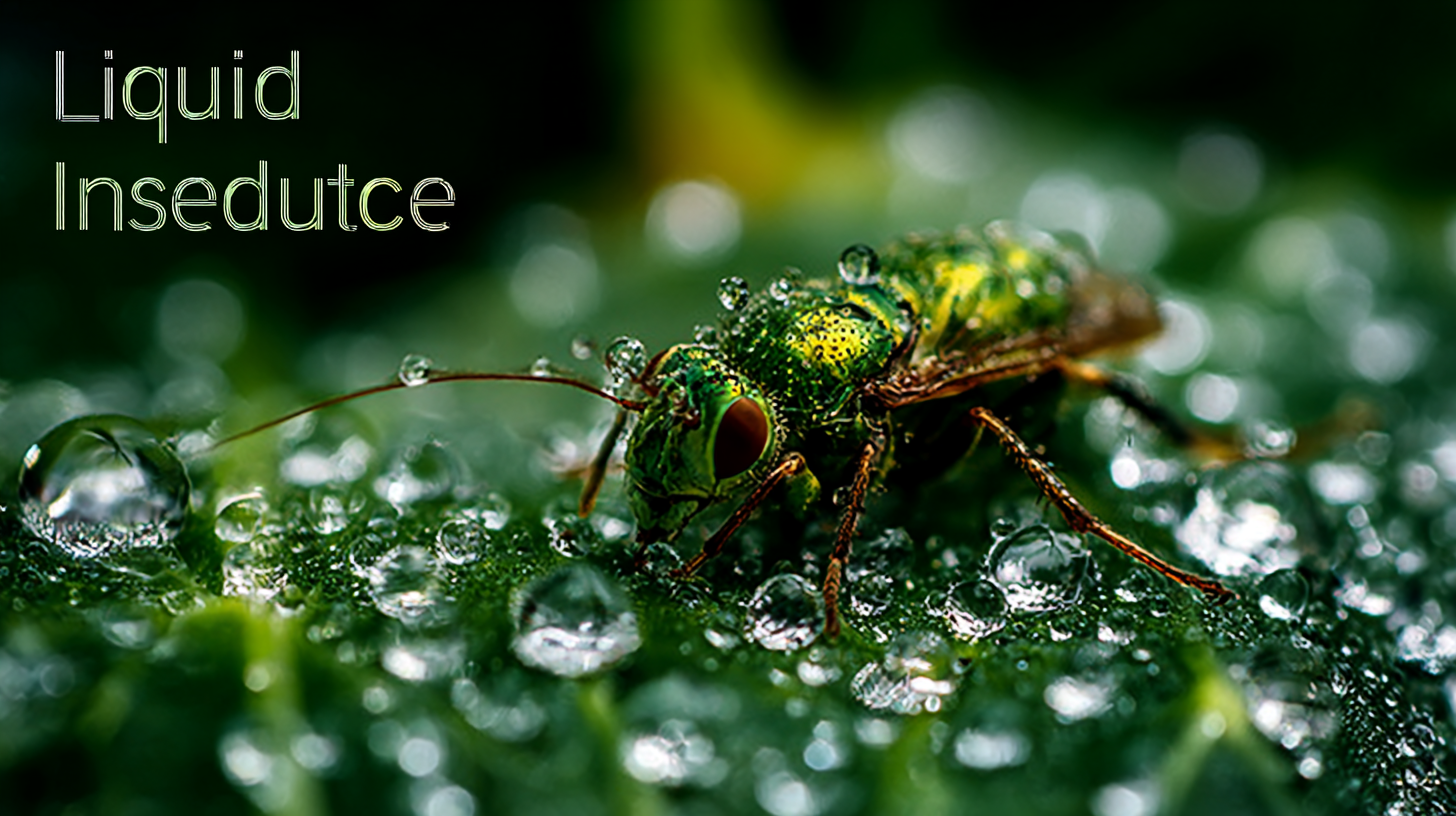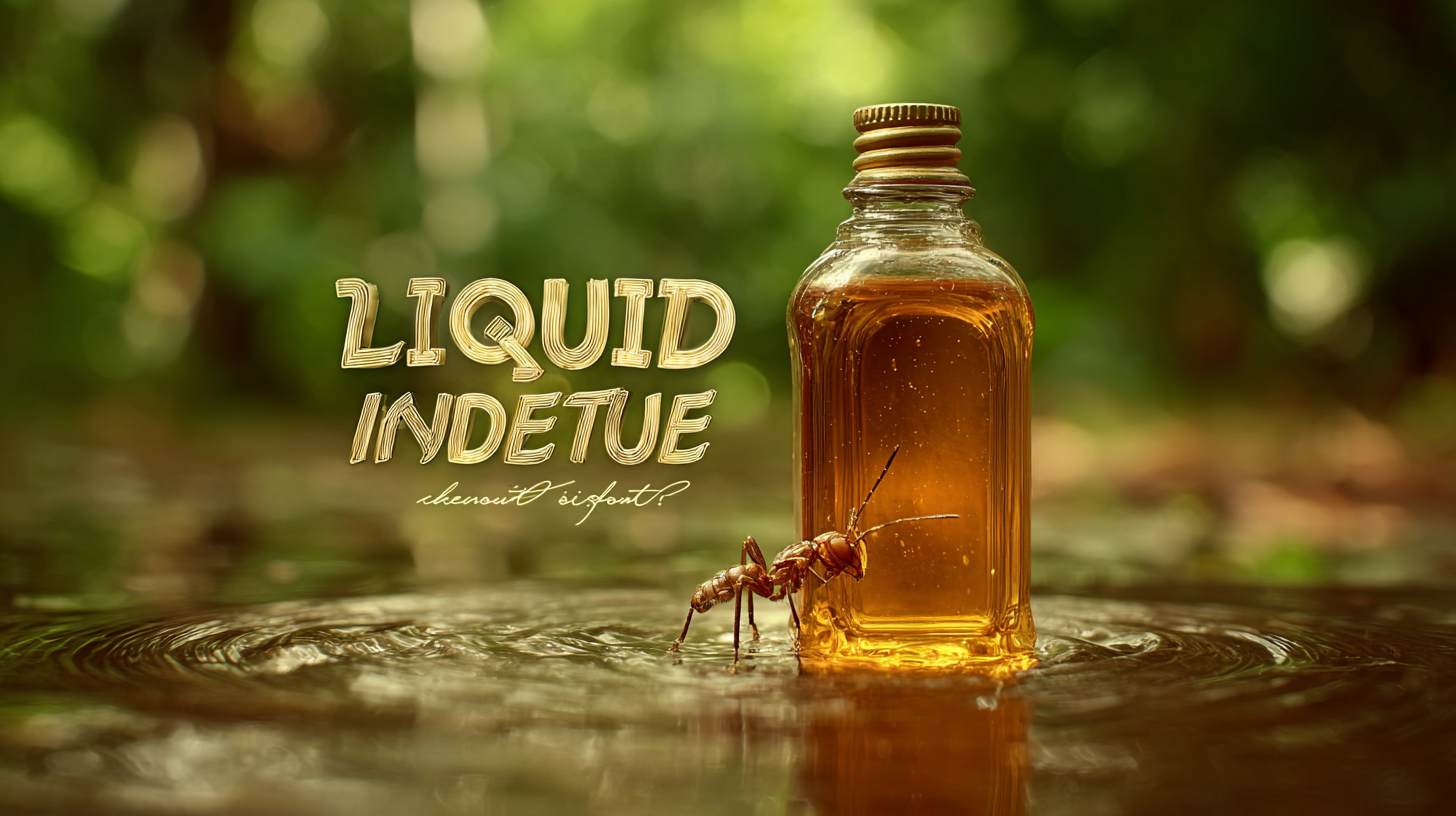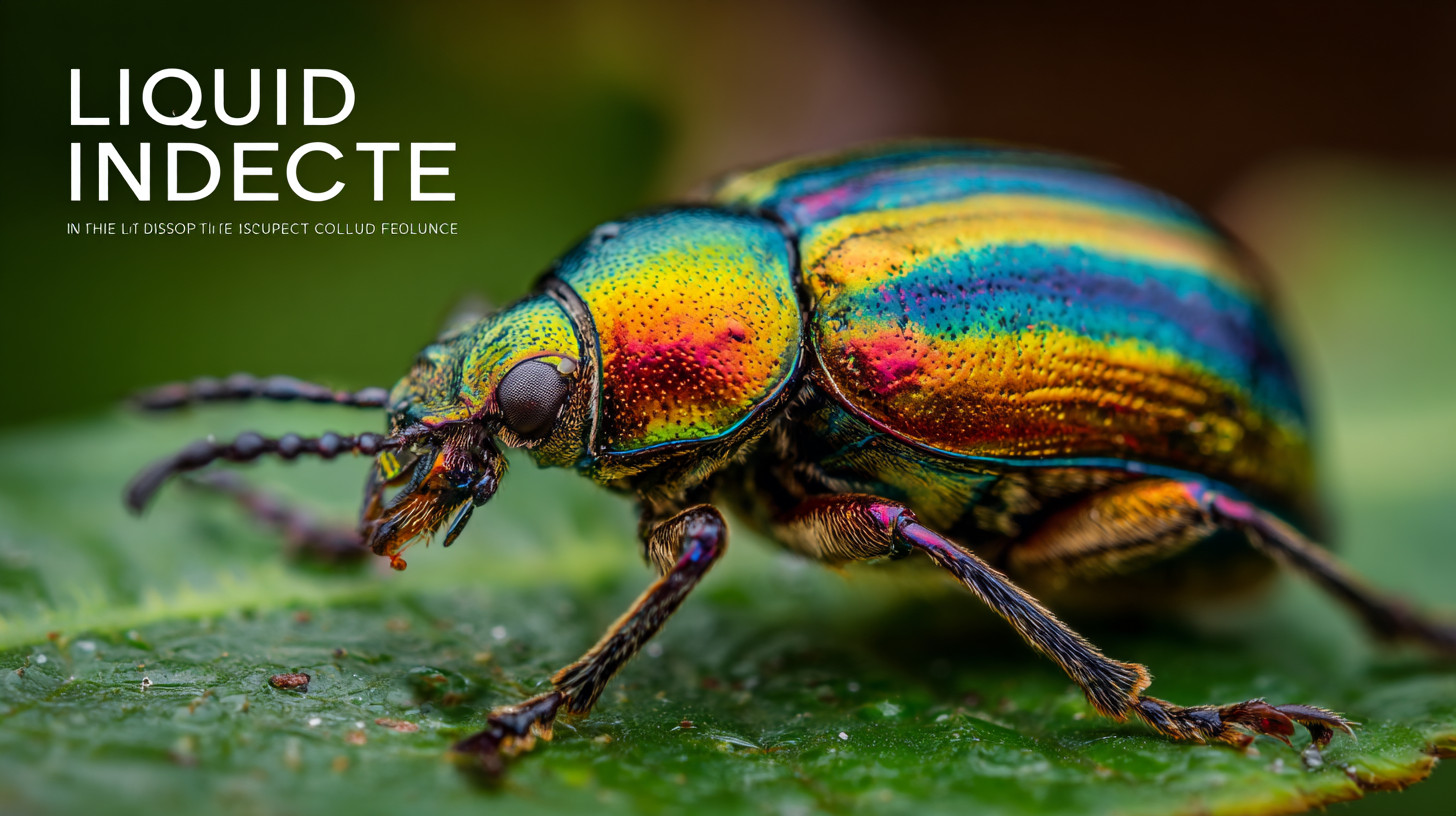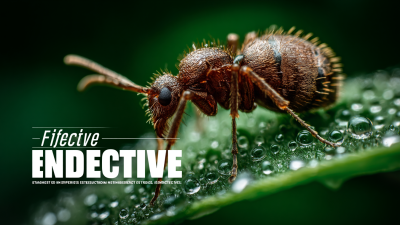 0551-68500918
0551-68500918 





When it comes to keeping pests at bay, picking the right solution is super important if you want to create a pest-free home or workspace. Today, let’s dive into some of the best Liquid Insecticides out there. It’s really cool to see how companies have stepped up their game with research and new developments in this area. For instance, there’s Innovation Meiland, based in Hefei, China. They’re really leading the charge in creating fresh pesticide products, smarter formulations, and improved processes. They've earned a solid reputation as a go-to manufacturer that’s all about delivering top-notch agricultural solutions to folks around the globe. So, in this blog, we're going to take a closer look at how effective Liquid Insecticides can be. Trust me, the incredible products from Meiland can really boost how you manage pests, whether it’s for your home or a business.

Finding the right liquid insecticide is super important if you want to tackle pests effectively. It’s not just about what’s in it—the active ingredients, sure, but also how it’s made and how you apply it. Picking the right one can really help cut down on those annoying pest populations, keeping homes and businesses safe and healthy. So, when you’re on the hunt for a liquid insecticide, keep in mind things like what pests you're dealing with, how it affects the environment, and of course, how safe it is for you to use. The best products should work quickly but also be kind to our planet and easy to use.
At Innovation Meiland (Hefei) Co., LTD., we’re all about developing top-notch pesticide products that fit our customers’ diverse needs. We put a lot of heart into research and development to create innovative formulas that boost effectiveness while being gentle on the environment. Based in Hefei, China, our headquarters is focused on making sure our products not only do their job but are also safe for users and good for the ecosystems they’re applied in. By emphasizing quality and innovation, we're committed to giving you the best tools to take control of pest problems efficiently.
When you're on the hunt for a solid liquid insecticide, it’s really important to pay attention to the key ingredients that make it effective against those pesky pests. A good starting point is to look for active compounds like pyrethroids. These are actually synthetic versions of insecticides that you’d find naturally in chrysanthemum flowers. Reports from the industry are pretty clear—pyrethroids have this awesome ability to quickly take down all sorts of bugs, including those annoying mosquitoes and ants. That’s why both homeowners and pest control folks tend to favor them.
Another ingredient you want to keep an eye out for is neonicotinoids. These guys mess with the bugs' nervous systems, which is pretty effective against infamous pests like termites. They can really get under your skin, right?
Here’s a tip: Always check if the product has the Environmental Protection Agency (EPA) registration on the label—this is your green light for safety and effectiveness. Plus, if you can find formulations that pack multiple active ingredients, that’s a smart move for dealing with pests that have built up some resistance to just one kind of chemical. Yeah, pests can be stubborn like that!
And don’t forget about insect growth regulators (IGRs). These are super helpful because they disrupt the growth of younger insects, which means you can keep their populations in check before they even become a problem. Using IGRs together with other active ingredients is a great way to boost your pest management game and aim for long-lasting results!
You know, when you're dealing with pesky insects, picking the right liquid insecticide really matters. So, let’s dive into a side-by-side look at some of the popular options out there today. We’ll chat about their active ingredients, how to use them, and what pests they're best for. Take pyrethroid-based insecticides, for instance. These guys come from chrysanthemum flowers and are super popular because they knockdown bugs quickly – you name it, mosquitoes, ants, cockroaches, they’re on it! Plus, they’re relatively low in toxicity, which is a big win for homes with kids and pets running around.
Then we’ve got neonicotinoids, which are designed to mess with insect nervous systems. They’re pretty impressive because they stick around for a long time and can tackle a bunch of different pests. But here’s the thing – there’s a lot of chatter about how they affect the environment, especially those poor bees. And let’s not forget about products with natural ingredients like sulfur or essential oils. They might take their time to work, but they're gaining traction with folks who want to be a bit more eco-conscious about the chemicals they use. So, by getting a grip on what each of these insecticides brings to the table, you’ll be in a much better spot to choose the one that fits your pest problem just right.
 You know, when it comes to liquid insecticides, the manufacturing standards really matter. The Environmental Protection Agency (EPA) has made it clear that sticking to these regulations is key to making sure the active ingredients are just right—like, at the perfect levels to really knock out those pests. Take a look at this: according to a report from the National Pest Management Association (NPMA), products that follow these guidelines can hit up to a whopping 90% pest mortality rate. In contrast, those that don’t quite hit the mark? They’re lucky if they manage around 50% efficiency. Yikes!
You know, when it comes to liquid insecticides, the manufacturing standards really matter. The Environmental Protection Agency (EPA) has made it clear that sticking to these regulations is key to making sure the active ingredients are just right—like, at the perfect levels to really knock out those pests. Take a look at this: according to a report from the National Pest Management Association (NPMA), products that follow these guidelines can hit up to a whopping 90% pest mortality rate. In contrast, those that don’t quite hit the mark? They’re lucky if they manage around 50% efficiency. Yikes!
So, if you’re in the market for a liquid insecticide, it’s super important to pay attention to how they’re made. High-quality options usually go through some serious testing to ensure they can wipe out pests without putting you or the environment at risk. Always choose products that spell out their active ingredients clearly and stick to the legal and safety guidelines.
Here’s a little tip: before you get all spray-happy, make sure to read the label! Following the manufacturer’s instructions on dosage and how to apply it can make a huge difference.
And don’t forget about the formulation—this can really affect how well the product works. Liquid insecticides that use advanced delivery systems, like microencapsulation or emulsion, often last longer and get into the nooks and crannies where pests hang out.
Another handy tip? Look for insecticides labeled for a wide range of pests. This way, you can really maximize your pest control efforts and tackle more than one pesky issue at a time.
You know, sustainability is becoming such a big deal these days, especially when it comes to how we make liquid insecticides. With consumers and environmental advocates really pushing for more eco-friendly options, it’s great to see manufacturers stepping up their game. They’re creating biodegradable formulas that do their best to protect non-target organisms and the overall ecosystem. A lot of these innovative products use plant-based ingredients, which is cool because they not only reduce toxicity but also keep those beneficial insects happy—super important for a healthy ecosystem!
And there's more! These sustainable liquid insecticides are all about targeting in a smart way. They’re designed to fight off pests effectively without messing with the beneficial critters. Thanks to some pretty neat tech and ongoing research, we’re seeing products that pack a punch against pests while being friendly to the environment. By embracing these sustainable methods, the pest control industry isn’t just tackling pest problems right now; they're also doing their part to build a more sustainable future for both agriculture and urban spaces. It's all about creating healthier environments for generations to come.
Alright, so if you really want to get the most out of your liquid insecticides, you’ve got to know how to apply them right. A study from the Pesticide Action Network mentioned that using the right techniques can actually boost insecticide effectiveness by as much as 30%! That’s a big deal, right? It really highlights how important it is to be precise, not just with how much you use, but also with how you apply it. Things like targeted spraying, picking the right type of nozzle, and timing it just right with the weather can all play a huge role in how well your pest control efforts pan out.

On top of that, industry reports are saying that if you pair liquid insecticides with integrated pest management (IPM) strategies, your chances of success go even higher. For instance, an analysis from the National Pest Management Association pointed out that mixing liquid insecticides into a solid IPM plan can cut down pest populations by over 50%! This strategy isn’t just about getting rid of pests right away, but also about making sure they don’t come back—think habitat modification, keeping an eye on things, and using other pest control methods that work well together. By blending these smart application techniques with a thoughtful pest management plan, both homeowners and pros can really nail their pest control goals.
: Pyrethroids are synthetic versions of naturally occurring insecticides found in chrysanthemum flowers. They are important because they provide rapid knockdown effects on various pests, making them a popular choice for effective pest control.
Neonicotinoids affect the nervous system of insects and are effective against notorious pests like termites, enhancing the overall effectiveness of liquid insecticides.
EPA registration indicates that the product meets safety and efficacy standards, ensuring that it can be used without posing significant risks to humans and the environment.
IGRs interfere with the development of juvenile insects, helping to control pest populations before they reach maturity. Combining IGRs with other active ingredients enhances pest management strategies.
Adherence to manufacturing standards ensures optimal concentrations of active ingredients in insecticides, significantly improving pest control outcomes, potentially achieving up to 90% pest mortality rates.
Consumers should look for advanced delivery systems, such as microencapsulation or emulsion, as these can provide prolonged effectiveness and better penetration into pest habitats.
Sustainability is crucial as manufacturers develop biodegradable formulations that minimize harm to non-target organisms and maintain the balance of beneficial insects in the ecosystem.
Sustainable formulations are designed for selective targeting, effectively combating pests while sparing beneficial species, due to advancements in technology and research.
Using multiple active ingredients can reduce the likelihood of pests developing resistance to a single compound, leading to more effective and long-lasting pest control.
Always read the label carefully and follow the manufacturer's instructions for proper dosage and application methods to ensure safe and effective use.







